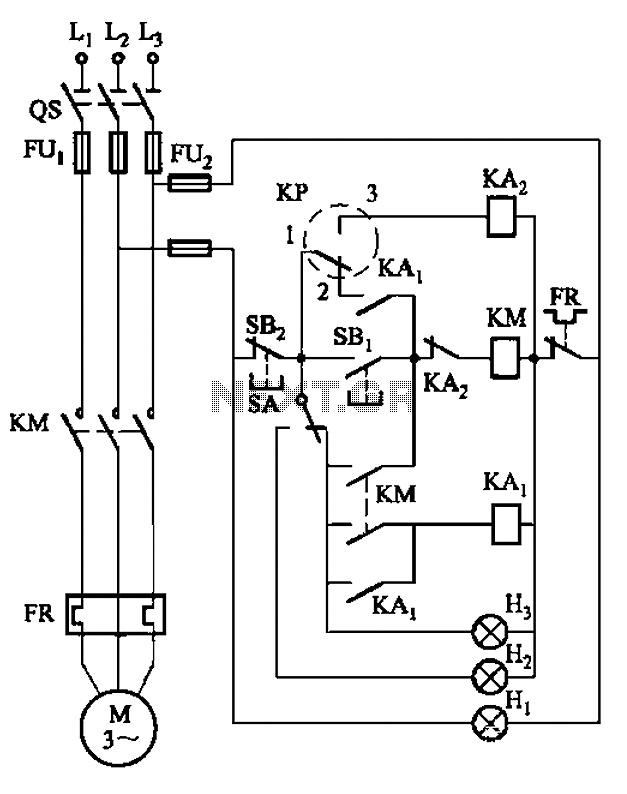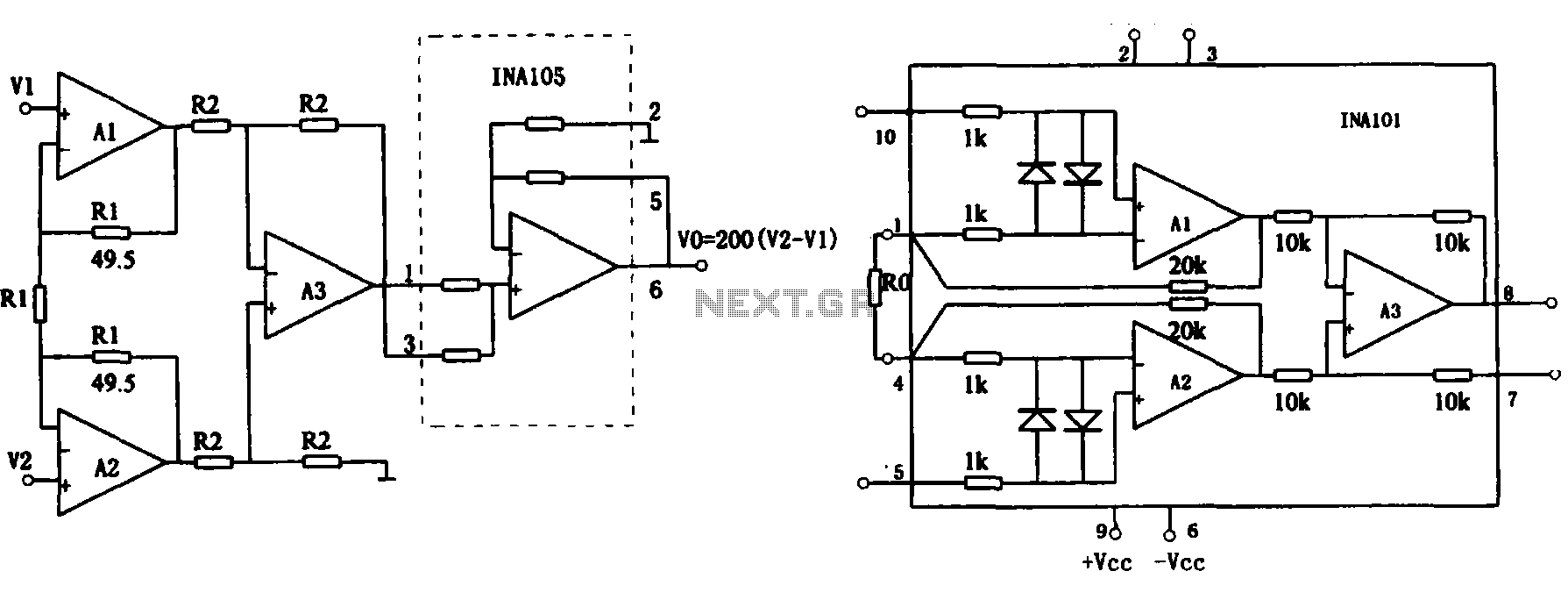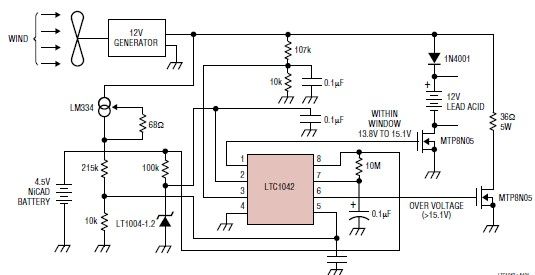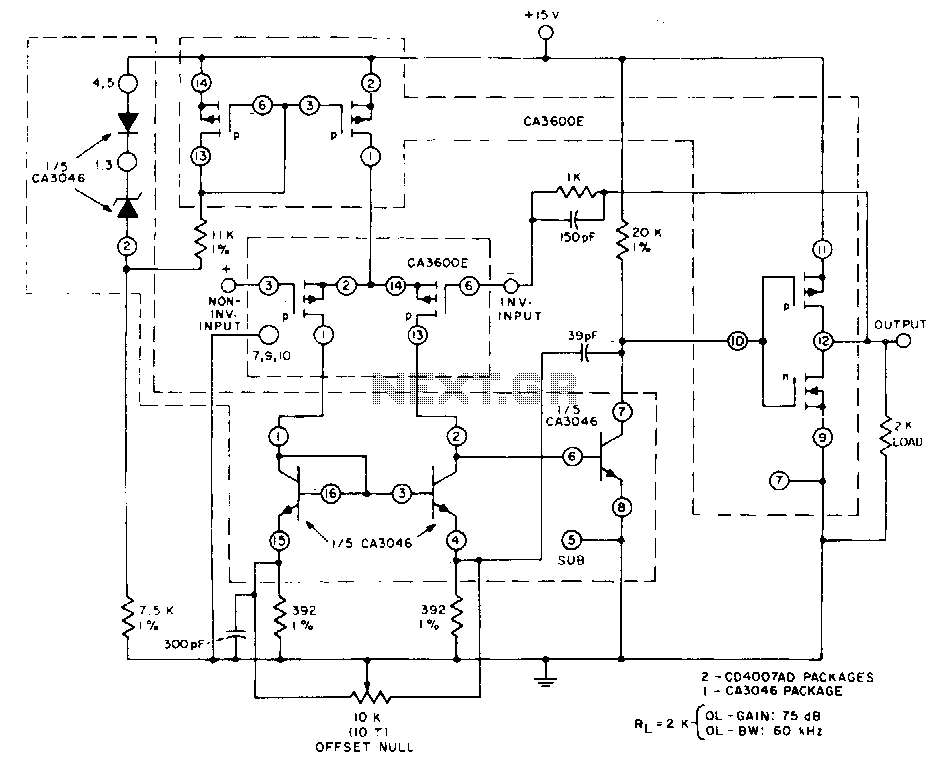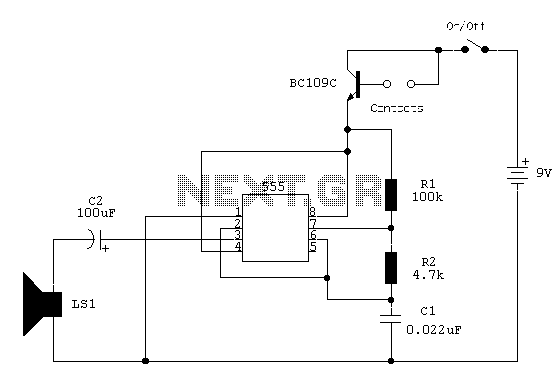
45Mhz If Amplifier With Crystal Filter Circuit
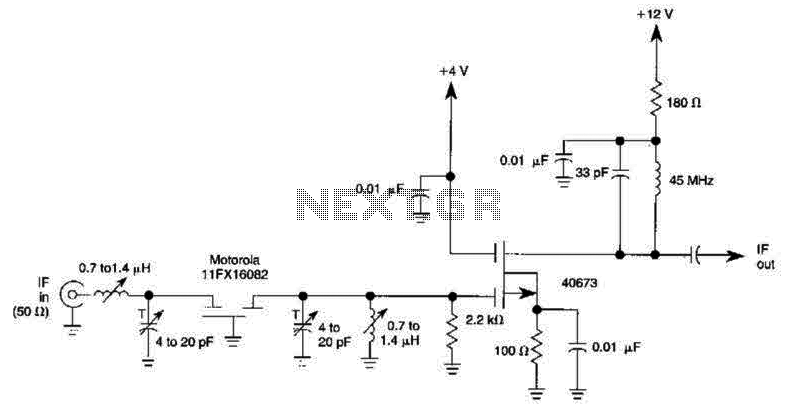
A 40673 dual-gate MOSFET is matched to a crystal filter operating at 45 MHz. The filter impedance is approximately 2 kΩ. The +4 V source can be adjusted to control the gain, ranging from +4 V to -4 V.
The 40673 dual-gate MOSFET is designed for RF amplification applications, particularly suitable for use in high-frequency circuits such as those involving crystal filters. In this configuration, the MOSFET is matched to a crystal filter that operates at a frequency of 45 MHz, which is a common frequency for various communication systems. The impedance of the filter, approximately 2 kΩ, is significant as it influences the matching network design to ensure optimal power transfer and minimal signal reflection.
The gain control feature, facilitated by a variable +4 V source that can be adjusted down to -4 V, allows for dynamic adjustment of the amplifier's performance. This capability is critical in applications where signal conditions may vary, enabling the user to maintain consistent output levels. The dual-gate configuration of the MOSFET provides enhanced control over the gain, allowing for improved linearity and reduced distortion, which is particularly beneficial in RF applications.
For implementation, it is essential to design a matching network that accommodates the 2 kΩ impedance of the crystal filter while ensuring that the 40673 MOSFET operates within its specified parameters. This may involve the use of inductors and capacitors to create a suitable impedance transformation. Additionally, attention should be given to power supply decoupling and layout considerations to minimize parasitic capacitances and inductances, which can adversely affect performance at high frequencies.
Overall, the integration of the 40673 dual-gate MOSFET with a crystal filter at 45 MHz presents a robust solution for RF amplification, with the added benefit of gain control to adapt to varying signal conditions. A 40673 dual-gate MOSFET is matched to a crystal filter at 45 MHz. The filter impedance is around 2kQ. The + 4-V source can be made variable for gain control ( about +4 to -4V.)
The 40673 dual-gate MOSFET is designed for RF amplification applications, particularly suitable for use in high-frequency circuits such as those involving crystal filters. In this configuration, the MOSFET is matched to a crystal filter that operates at a frequency of 45 MHz, which is a common frequency for various communication systems. The impedance of the filter, approximately 2 kΩ, is significant as it influences the matching network design to ensure optimal power transfer and minimal signal reflection.
The gain control feature, facilitated by a variable +4 V source that can be adjusted down to -4 V, allows for dynamic adjustment of the amplifier's performance. This capability is critical in applications where signal conditions may vary, enabling the user to maintain consistent output levels. The dual-gate configuration of the MOSFET provides enhanced control over the gain, allowing for improved linearity and reduced distortion, which is particularly beneficial in RF applications.
For implementation, it is essential to design a matching network that accommodates the 2 kΩ impedance of the crystal filter while ensuring that the 40673 MOSFET operates within its specified parameters. This may involve the use of inductors and capacitors to create a suitable impedance transformation. Additionally, attention should be given to power supply decoupling and layout considerations to minimize parasitic capacitances and inductances, which can adversely affect performance at high frequencies.
Overall, the integration of the 40673 dual-gate MOSFET with a crystal filter at 45 MHz presents a robust solution for RF amplification, with the added benefit of gain control to adapt to varying signal conditions. A 40673 dual-gate MOSFET is matched to a crystal filter at 45 MHz. The filter impedance is around 2kQ. The + 4-V source can be made variable for gain control ( about +4 to -4V.)
